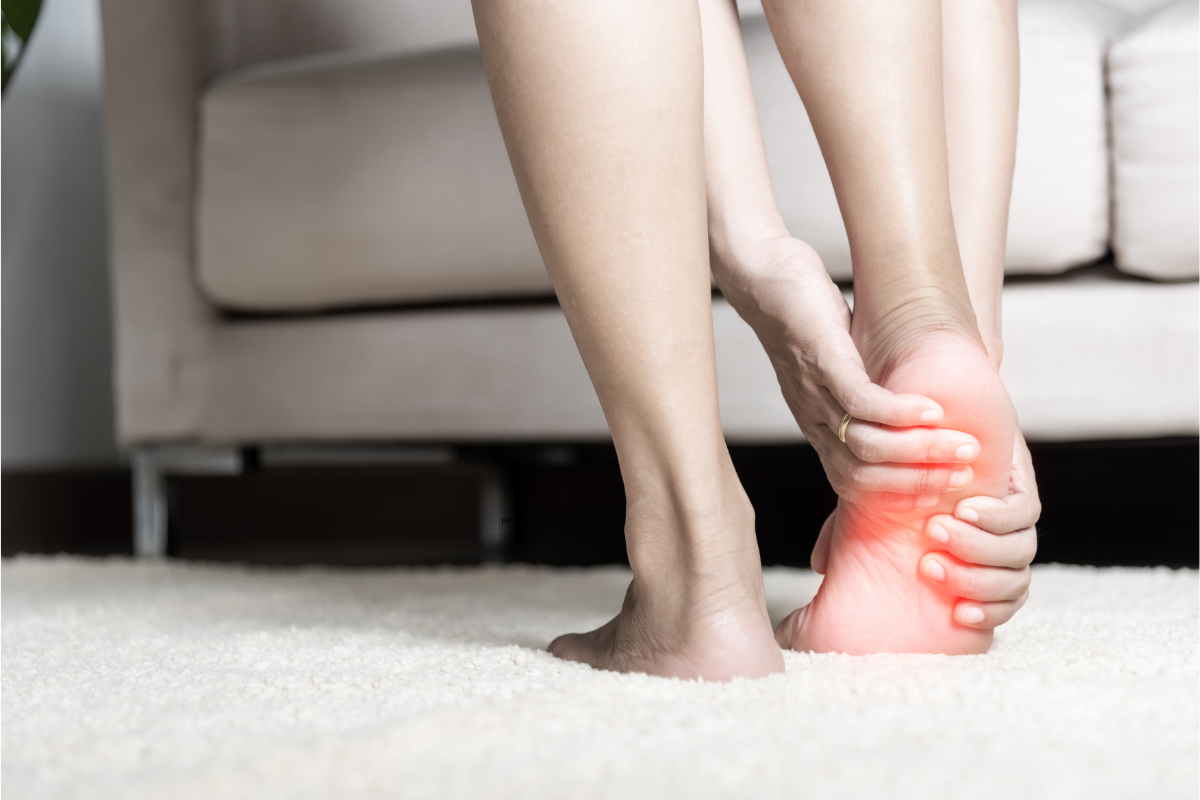Peripheral Neuropathy Exercise Therapy for Feet & Gait
Peripheral neuropathy affects the nerves in the feet and lower legs, often causing numbness, tingling, weakness, and balance difficulties. These symptoms can make walking and daily activities challenging and increase the risk of falls.
Exercise therapy for peripheral neuropathy and structured
physical therapy programs are essential for maintaining mobility, improving strength, and restoring functional gait. Innovative tools like
Just Walk allow patients to safely integrate home-based rehabilitation into their daily routines.
What is Peripheral Neuropathy?
Peripheral neuropathy occurs when peripheral nerves—responsible for transmitting signals between the spinal cord and muscles—are damaged. Common causes include:
- Diabetes
- Chemotherapy or medication side effects
- Autoimmune disorders
- Vitamin deficiencies
- Trauma or chronic illness
Symptoms usually start in the feet, leading to weakness, numbness, and difficulty with coordination. Over time, untreated peripheral neuropathy can significantly impact walking and daily independence.
Why It Matters / Who It Affects
Peripheral neuropathy affects millions of adults in the U.S., particularly those with diabetes or chronic illness. Weakness in the feet and lower legs can lead to altered gait patterns, impaired balance, and increased
fall risk. Early intervention through
exercise for peripheral neuropathy feet is crucial to preserve mobility. Patients who engage in
physical therapy for peripheral neuropathy often maintain better function and independence over time.
Treatment and Rehabilitation Options
Physical Therapy for Peripheral Neuropathy
- Focuses on strengthening lower limb muscles, improving coordination, and retraining gait.
- Includes
balance exercises, ankle and foot mobility drills, and progressive resistance training.
Exercise Therapy for Peripheral Neuropathy Feet
- Low-impact exercises such as seated leg lifts, toe curls, and resistance band workouts help maintain foot and leg strength.
- Tools like
Just Walk enhance these exercises by providing
adjustable resistance and
foot lift assistance, promoting safe gait retraining and functional walking.
Neuromotor and Home-Based Training
- Repetitive, controlled movements stimulate
neuromotor recovery and improve walking mechanics.
- Home-based devices allow patients to
practice exercises safely and consistently, complementing in-clinic physical therapy sessions.
Tips and Tools for Patients and Caregivers
- Begin with short sessions (10–15 minutes) and gradually increase duration and intensity.
- Integrate exercises into daily routines, such as walking indoors, stair climbing, or simple balance drills.
- Monitor for pain, numbness, or imbalance, and adjust exercises accordingly.
- Use a
wearable device like
Just Walk to add controlled resistance, strengthen the feet and legs, and retrain gait without overloading joints.
Regular check-ins with a physical therapist ensure safety and maximize results.
Product Integration / Differentiation: Just Walk
Just Walk is a wearable, low-weight device designed for rehabilitation of lower limb and gait disorders, making it ideal for patients with peripheral neuropathy:
- Unique features:
- Lightweight (3 lbs) and portable
- Adjustable resistance for personalized strength training
- Supports foot lift and correct walking mechanics
- Seamlessly integrates into walking, stairs, and daily activities
- Practical benefits:
- Strengthens weak muscles without high-impact stress
- Improves balance and coordination
Perfect for home-based or clinic-guided exercise
Summary
Peripheral neuropathy can limit mobility and independence, but
exercise therapy for peripheral neuropathy,
physical therapy, and home-based rehab can make a significant difference. Patients who integrate
foot-focused exercises and tools like
Just Walk often see improved strength, balance, and gait function. Start small, stay consistent, and consult your healthcare provider to create a safe, effective program.
FAQs
?Can exercise reverse peripheral neuropathy
Exercise cannot reverse nerve damage but can improve strength, gait, and functional mobility, reducing fall risk.
?How often should I do peripheral neuropathy exercises
Daily or 4–5 times per week is ideal, starting with short sessions (10–15 minutes) and gradually increasing intensity.
?Is physical therapy necessary for peripheral neuropathy
Yes, structured physical therapy helps retrain gait, improve balance, and maintain independence.
?Can I use a wearable device like Just Walk if I have severe numbness in my feet
Yes, but start under supervision from a physical therapist to ensure safety and proper use.
References
- National Institute of Neurological Disorders and Stroke.
Peripheral Neuropathy Fact Sheet.https://www.ninds.nih.gov
- Mayo Clinic.
Peripheral Neuropathy: Symptoms and Causes.https://www.mayoclinic.org
- Singleton JR, et al.
Exercise and Neuropathy: A Review.
Diabetes Care, 2014;37:2607–2615.
Important
This article is for informational purposes only and is not a substitute for professional medical advice; always consult your doctor or physical therapist before starting any exercise or using any device.




